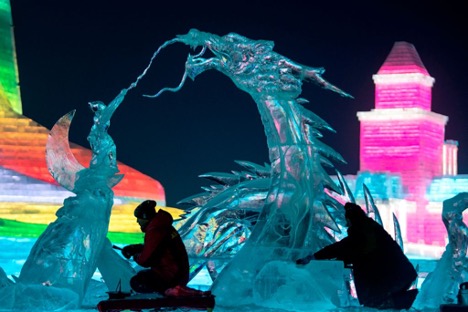China and Australia: Icy Times
Here are 14 points on the longest icy age between Australia and China since diplomatic relations were established nearly 50 years ago.
The 14 points match the number—but not spirit—of the Chinese embassy’s 14 angry charges against Australia.
Australia knows an ‘assertive China is the new constant’.
As our top diplomat noted in 2019, the ‘new normal’ of Australia’s dealings with China will be marked by ‘enduring differences’.
Australia’s choice: In the rolling seminar on China as the phenomenon of the age, the Oz polity has abandoned the hopeful line that ‘there’s no question to answer, no choice necessary’. Hedging became so prickly it wasn’t a strategy. Canberra has drawn lines, said no, and pushed back in a cascade of wake-up moments. The cumulative effect is to deliver a choice. While Southeast Asia argues it mustn’t be forced to choose, Australia goes to a different place.
The terms of Australia’s choice evolve and shift. Yet nuanceshave been stripped away and language becomes blunter: Australia now talks about China as a bully and a potential adversary.
Icy age: The latest icy time with Chinawill soon enter its fifth year. Previous cold spells—under the Hawke, Howard and Rudd governments—were short because economic interests quickly rewarmed relations. Today’s iciness delivers frigid diplomacy, chilled strategic perspectives, and frost bite for Oz exporters. Beijing isn’t returning calls. No senior Chinese leader has come to Australia since March 2017.
The icy starting point was Malcolm Turnbull’s speech in June 2017 expressing a ‘dark view’ of a ‘coercive China’ seeking domination.
Death of ‘strategic partnership’: Australia signed up to strategic partnership during the Gillard Labor government, accepting China’s ‘strategic partnership’ wording ‘in order to get them to give us guaranteed annual leaders’ meetings’. In February, Prime Minister Scott Morrison bid adieuto strategic partnership: China’s outlook and the nature of China’s external engagement, both in our region and globally, has changed since our Comprehensive Strategic Partnership was formed and going further back than that, certainly in the decades that have led up till now.
We cannot pretend that things are as they were. The world has changed.
China’s trade punishment: The retribution that began last year cut the value of Australian trade with China for almost all industries by 40%(only China’s huge appetite for iron ore sustains the trade figures). Australia’s ambassador to Beijing, Graham Fletcher, says China ‘has been exposed as quite unreliable as a trading partner and even vindictive’.
Labor–Liberal tacit consensus: Labor backs the Morrison government in facing China. Labor’s hits are on tactics and competence, not the nature of the choice. All the attack lines in opposition leader Anthony Albanese’s start-of-the-year foreign policy speech were about how badly Morrison had handled Donald Trump. Albanese said Australia should stand with the new Biden administration to both challenge and coexist with China.
China’s 14 charges: The rap sheet is classic China: it’s all Australia’s fault. It’s Oz that’s ‘opaque’, ‘doing the bidding of the US’, guilty of ‘politicisation and stigmatisation’, ‘spearheading the crusade against China’, ‘poisoning the atmosphere of bilateral relations’.
Brush off the bombast to view a useful list of choices Australia wouldn’t recant on: Huawei and 5G tech; foreign interference legislation; Xinjiang, Hong Kong and Taiwan.
Xi Jingping: This is personal. Xi’s 2014 addressto the Australian Parliament was a relationship high point; now the leader who visited every Australian state punishes ingratitude. China’s 14 charges listed Australia’s ‘call for an international independent inquiry into the Covid-19 virus’.
Australia spoke loud at a moment of crisis for Xi’s leadership; he sends retribution.
China’s might: ‘The brutal reality of dealing with China’(a front cover headline from The Economist). On track to be the top economy, China is the largest trading partner of 64 countries, against 38 countries with the US. ‘[I]f forced to take sides, many countries might choose China over the West,’ The Economist muses. ‘Engagement with China is the only sensible course, but how does it avoid becoming appeasement?’
The end of US primacy: The Biden administration understands the game has changed. Now to get America back in the game
The global system shakes: We are at the end of the old international order, a profoundly challenging moment for Australia as a contented status quo power.
The Indo-Pacific: A new geographic construct is ‘the cradle of crises or solutions’. In the effort for coexistence, not war, Rory Medcalf describes the Indo-Pacific as ‘both a region and an idea: a metaphor for collective action, self-help combined with mutual help’. The first Quad leaders’ summit polishes the democratic diamond, as one facetof the construct.
The pandemic: Covid-19 changedthe way we work and live and how we think about health and travel and economics and government (especially competent government). In Huong Le Thu’s apt aphorism: ‘If power corrupts, then crisis reveals.’ And crisis accelerates history.
Hot peace: ‘New cold war’ carries so much history it distorts understanding. ‘Hot peace’is a better label for what’s different this time: ‘technology, cyberconflict and influence operations’. Much heat flows from US–China intimacy, deeply intertwined yet deeply different powers, bound to compete, compel and challenge.
Dragon punchers and dragon patters: In recent decades, Canberra’s argument was between dragon slayers and panda huggers (the 2013 Asian century white paperwas a big panda cuddle).
Alas, the panda is extinct.
The poles of the debate converged. Dragon punchers now debate dragon patters. Both sides see the same creature.
Even patters are wary: Geoff Raby writes of the ‘dystopian’ times and Australia’s need for ‘a hard-headed’, realist grand strategy.
Still divided on tactics, punchers and patters agree on the size and challenge of the dragon.
Graeme Dobell is ASPI’s journalist fellow.
This article was published by ASPI on April 6, 2021.
Featured Image: Noel Celis/AFP/Getty Images.

